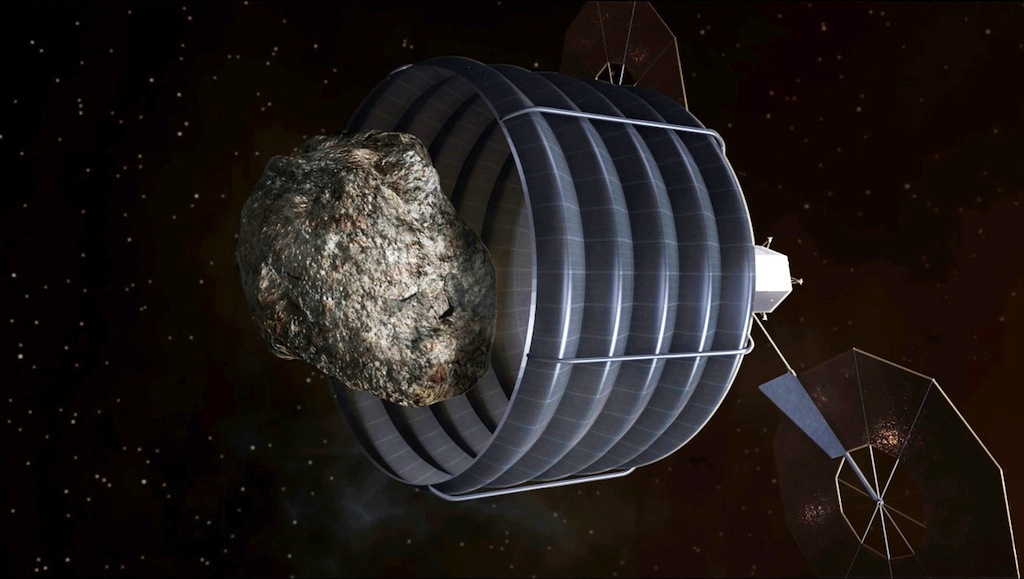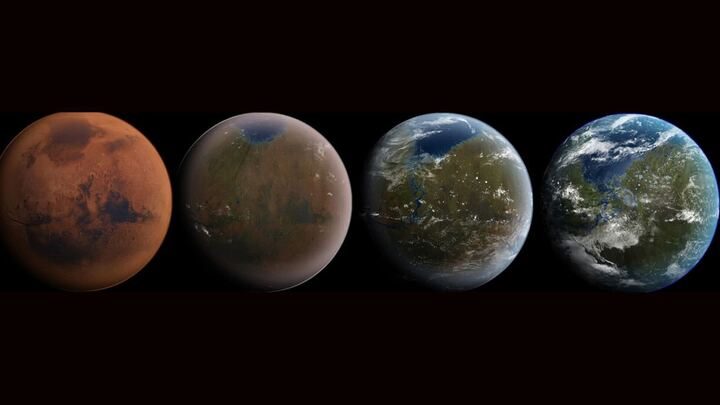NASA Flooded with Asteroid Exploration Ideas

SAN JOSE, Calif. — A NASA call for novel ideas on how to tackle its ambitious mission to capture an asteroid and park it near the moon has paid off in spades, with the agency receiving hundreds of proposals from potential partners.
NASA has received more than 400 proposals from private companies, non-profit groups and international organizations in response to a call for asteroid-retrieval mission suggestions released last month, agency officials announced Friday (July 26). The space agency will review the submissions over the next month and plan to discuss the most promising ideas in a public workshop in September.
"We are really excited about the overwhelming response," NASA Deputy Administrator Lori Garver told reporters here at the NewSpace 2013 conference, adding that the ideas were "overwhelmingly positive."
NASA put out an official request for information on June 18 to seek input on how to achieve its asteroid retrieval mission. That asteroid capture plan, which NASA unveiled in April, is known as the agency's Asteroid Initiative. [How It Works: NASA Asteroid-Capture Mission in Pictures]
The NASA asteroid retrieval mission aims to send a robotic spacecraft out to a near-Earth asteroid, snare it with a "space lasso" and tow it back to a parking orbit near the moon so it can be explored by astronauts. The asteroid mission is NASA's way of pursuing the goal set by President Barack Obama that called on NASA to send a manned mission to a near-Earth asteroid by 2025, and then aim for a Mars flight in the 2030s.
On June 18, NASA also unveiled its Asteroid Grand Challenge, an effort to find and identify all of the asteroids that could pose a threat to Earth, as well as develop ideas to defend the planet against potential impacts. The effort is one of several national "grand challenges" announced by the Obama Administration and other government agencies in recent weeks to spur scientific progress and innovation.
"Under our plan, we're increasing the identification, tracking and exploration of asteroids, and the response to this initiative has been gratifying," Garver told an audience of private spaceflight experts and enthusiasts at the NewSpace conference here. "The aerospace industry, innovative small businesses and citizen scientists have many creative ideas and strategies for carrying out our asteroid exploration mission and helping us to protect our home planet from dangerous near-Earth objects."
Get the Space.com Newsletter
Breaking space news, the latest updates on rocket launches, skywatching events and more!
About one-third of the 400 proposals were concepts tied to NASA's Asteroid Grand Challenge, while the rest dealt directly with components of the asteroid-retrieval mission.
NASA's asteroid retrieval mission has sparked intense debate among members of Congress over whether the space agency should maintain its focus on manned asteroid exploration or shift instead to a moon-oriented goal.
Garver said today that asteroid exploration and lunar exploration should not be viewed as an either/or choice, but as complementary targets for future human and robotic spaceflight. But new lunar exploration missions should aim for a sustained presence on the moon, and not just be a repeat of NASA's Apollo lunar landings, she added.
"We truly have an increased focus on sustainable lunar activity," Garver said.
NASA's request for information on its asteroid plans is one of three calls for input by the agency on several space exploration efforts. On July 2, NASA launched a call for ideas from private space industry to learn more about how the agency might work with commercial moon lander missions. On July 17, NASA released a call for proposals from private spaceflight companies for unfunded partnerships with the space agency that could take advantage of the agency's expertise.
Email Tariq Malik at tmalik@space.com or follow him @tariqjmalikand Google+. Follow us @Spacedotcom, Facebookand Google+. Original article on SPACE.com.
Join our Space Forums to keep talking space on the latest missions, night sky and more! And if you have a news tip, correction or comment, let us know at: community@space.com.

Tariq is the Editor-in-Chief of Space.com and joined the team in 2001, first as an intern and staff writer, and later as an editor. He covers human spaceflight, exploration and space science, as well as skywatching and entertainment. He became Space.com's Managing Editor in 2009 and Editor-in-Chief in 2019. Before joining Space.com, Tariq was a staff reporter for The Los Angeles Times covering education and city beats in La Habra, Fullerton and Huntington Beach. In October 2022, Tariq received the Harry Kolcum Award for excellence in space reporting from the National Space Club Florida Committee. He is also an Eagle Scout (yes, he has the Space Exploration merit badge) and went to Space Camp four times as a kid and a fifth time as an adult. He has journalism degrees from the University of Southern California and New York University. You can find Tariq at Space.com and as the co-host to the This Week In Space podcast with space historian Rod Pyle on the TWiT network. To see his latest project, you can follow Tariq on Twitter @tariqjmalik.
